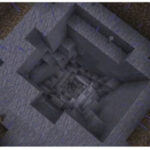The kidneys are vital organs that play a crucial role in maintaining your overall health. These bean-shaped powerhouses work tirelessly, filtering waste and excess fluid from your blood. Understanding where these organs are located and how they function is key to appreciating their importance. So, Where Are Kidneys Located in your body?
Locating Your Kidneys in Your Body
Your kidneys are positioned in your abdomen, specifically in the retroperitoneal space, which is behind the abdominal cavity lining. You have two kidneys, one on each side of your spine, sitting just below your rib cage. Imagine placing your hands on your hips and moving them upwards until you feel the bottom of your ribs; your kidneys are situated just above this point, towards your back.
Each kidney is roughly the size of a fist and has a distinctive bean shape. This strategic location provides them with protection from the rib cage while allowing them to efficiently perform their filtering functions.
Image: Diagram illustrating the human urinary system, highlighting the anatomical position of the kidneys, ureters, bladder, and urethra within the body.
Why Kidney Location Matters: Understanding Their Vital Functions
The location of your kidneys is intrinsically linked to their critical functions. Being situated near major blood vessels like the renal artery and renal vein allows for efficient blood flow into and out of the kidneys, which is essential for their primary role: filtering blood.
Kidneys perform several life-sustaining functions:
- Waste and Fluid Removal: Kidneys filter about half a cup of blood every minute, removing waste products and excess water to produce urine. This process prevents the buildup of toxins in your body.
- Electrolyte and Mineral Balance: They maintain a delicate balance of essential minerals like sodium, potassium, calcium, and phosphorus in your blood. This balance is crucial for nerve and muscle function, as well as overall cellular health.
- Blood Pressure Regulation: Kidneys produce hormones that help regulate blood pressure, ensuring it stays within a healthy range.
- Red Blood Cell Production: They produce erythropoietin, a hormone that signals your body to make red blood cells, preventing anemia.
- Bone Health: Kidneys contribute to bone health by activating vitamin D, which is essential for calcium absorption.
How Kidneys Work: A Closer Look Inside
To understand how kidneys function so effectively in their location, let’s delve into their internal structure. Each kidney is composed of approximately a million tiny filtering units called nephrons. These nephrons are the functional units of the kidney, responsible for the actual filtration and purification of blood.
Each nephron consists of two main parts:
- Glomerulus: This is a network of small blood vessels that acts as the initial filter. As blood flows through the glomerulus, smaller molecules, waste products, and fluid are filtered out. Larger molecules like proteins and blood cells remain in the bloodstream.
- Tubule: This is a U-shaped tube surrounding the glomerulus. As the filtered fluid moves through the tubule, essential substances like water, glucose, and amino acids are reabsorbed back into the bloodstream. Waste products and excess substances remain in the tubule and eventually become urine.
Image: Detailed illustration of a nephron, the functional unit of the kidney, showing the glomerulus filtering blood and the tubule reabsorbing essential substances while removing waste.
Blood Flow and Kidney Function
The strategic location of kidneys is also vital for their blood supply. Blood enters each kidney through the renal artery, a major vessel branching directly from the aorta. Inside the kidney, the renal artery branches into smaller and smaller vessels, eventually reaching the glomeruli within the nephrons.
After being filtered in the nephrons, the purified blood exits the kidney through the renal vein, which connects to the inferior vena cava, the body’s largest vein. This efficient circulatory system ensures that a large volume of blood is continuously processed by the kidneys.
In a single day, your kidneys filter an astonishing amount of blood – about 150 quarts. However, most of the filtered fluid is reabsorbed, with only 1 to 2 quarts becoming urine, which is then transported to the bladder via the ureters.
Image: Anatomical illustration of a human kidney, demonstrating the flow of unfiltered blood entering via the renal artery, filtered blood exiting through the renal vein, and urine leaving through the ureter.
In Conclusion
Understanding where are kidneys located is just the first step in appreciating these remarkable organs. Their position in the body is perfectly suited to facilitate their crucial roles in blood filtration, waste removal, and maintaining overall bodily homeostasis. The intricate structure of nephrons and the efficient blood flow to and from the kidneys highlight the sophisticated design of these vital organs. Taking care of your kidneys through a healthy lifestyle is essential for maintaining your well-being.


